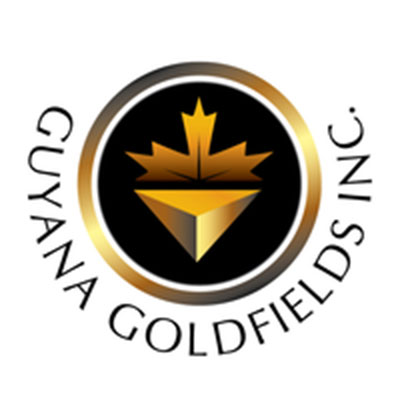Although a report on Monday once again raised the prospect of the sale of Guyana Goldfields Inc. (GGI) because of poor performance, government remains optimistic that the Canadian company will stay on and said that projections show that its flagship Aurora Gold Mines (AGM) will meet its revised production targets for 2019.
“I met with the new CEO and VP Perry Holloway and others recently and nothing about sale was raised.Today, I had a brief exchange with Mr. Holloway who said that the article was ‘not very accurate,’” Minister of Natural Resources Raphael Trotman told Stabroek News last evening.
He said that he and Holloway are to meet again “in just over a week” and will discuss the matter further.
Efforts to contact Holloway were futile as calls to him went unanswered.
A Bloomberg report on Monday stated that following the company’s performance last year, where it lost more than half its value, it was exploring options, including a potential sale.
“The Toronto-based company is working with advisers at Royal Bank of Canada and Maxit Capital, an independent financial adviser to mining companies, the people said, asking not to be identified as the matter is private. The deliberations are in early stages and may not result in a sale of the business, the people said,” the report stated, referring to persons familiar with the matter.
Stabroek News had reported in April that René Marion, Non-Executive Chair of the current Board of Directors, had revealed to shareholders that while pursuing its current business plan, the board was open to a potential sale and several “credible mining companies” were in various stages of conducting their due diligence on the company which is engaged in large-scale gold mining.
Trotman said that the company’s assessment of operations and sales was not uncommon but noted that the company’s production forecasts look promising. “Ultimately, businesses exist to make a profit so sales and takers are not uncommon,” he said.
Nonetheless, government is taking note of developments and its main interests is the welfare of AGM’s workers.
“The government is most interested in workers’ welfare and the non-cessation of operations. After recent issues, it does appear that the company is returning to viability. Production is up and preparations for underground mining are being made. Both of these we see as positive developments,” Trotman said.
The company last year saw a big slump in earnings from the Region Seven mine, where production fell by 10,050 ounces compared to 2017.
In its financial results, the company said that its fourth quarter production of 42,750 ounces was the highest for 2018.
The company, which was in a dispute with shareholders and former senior officials over how operations have being going since 2015, said that on a full-year basis in 2018, it produced 150,450 ounces, a decline of 10,050 ounces compared to production from the prior year.
The decrease was mainly attributable to a lower head grade but offset by higher mill throughputs averaging 7,100 tonnes per day (tpd) (2017 – 6,100 tpd).
GGI said that the daily average mining rate continued to rise through the fourth quarter, averaging 69,200 tpd, representing a new record and a surge of 176% when compared to the same quarter in 2017.
On a full year basis, it said that the daily average mining rate improved by 50% in order to meet the increase in stripping ratio for Rory’s Knoll open pit development.
It noted that the decrease in head grade for the year was due to the unforeseen, late mobilisation of the contractor (Stracon S.A), which resulted in a slow ramp up in the mining rate.
But following the tumultuous couple of months, the company last month announced a second quarter production of 37,300 ounces bringing its total half-year production to 74,000 ounces of gold. The comparable figure for 2018 was 70,100 ounces.
It also closed the first half of the year with no debt and $38.9 million of unaudited cash balance.
According to the quarterly report that was made public, this production keeps the company on track to achieving a yearly production within the projected range of 145,000 to 160,000 ounces of gold for 2019.
The report further noted that the company is currently seeing a record quarterly mill performance of 7,815 tonnes per day, which is a 10% increase from 2018.
Also recorded was a mining rate of 57,710 tonnes per day, a 45% increase in the mining rate compared to the previous year but a 6% decline from the first quarter of 2019. This decrease they stated was mainly because of lower equipment availabilities, along with seasonal rains.
A three-day strike earlier last month appeared to have minimal impact, with the company reporting that approximately 22,500 tonnes of ore was not processed during this period while adding that “it will not affect the third quarter productions guidance.”
The company has proudly declared more than two million hours of work without a “lost time injury” and noted that underground explorations were resumed and advanced 164 metres (538 ft) in the second quarter.






